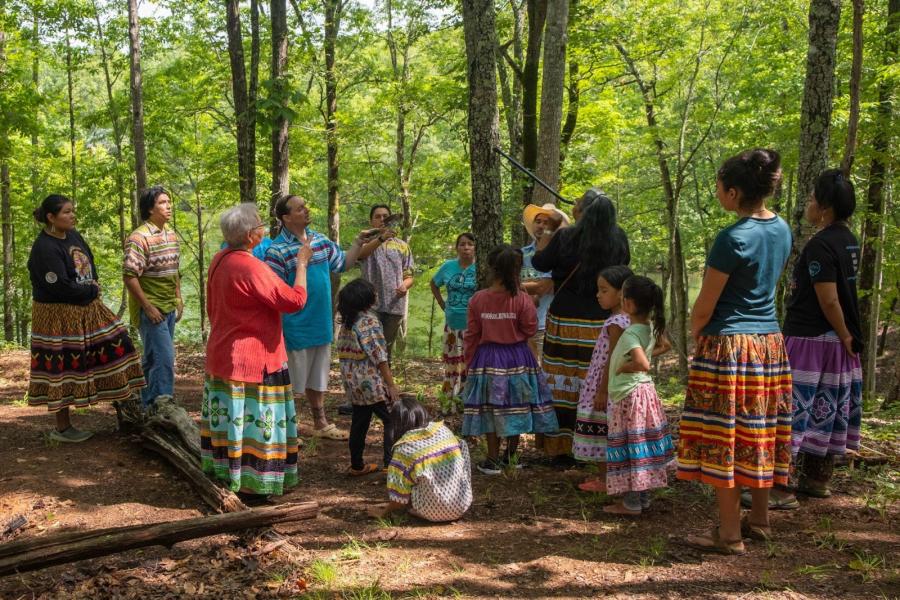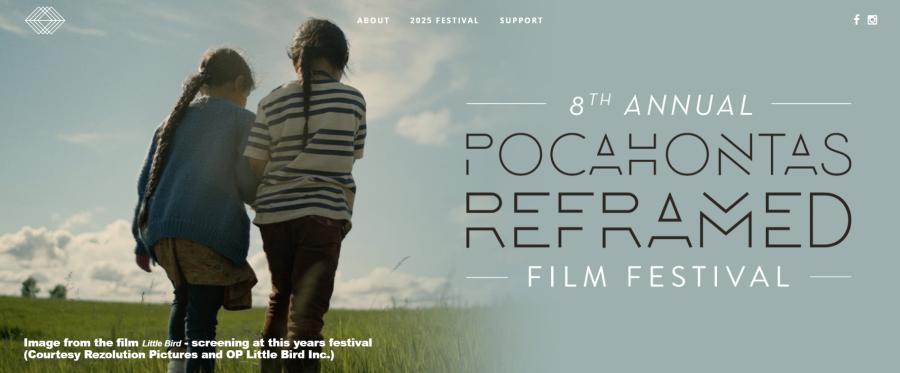In 1943 the United States Secretary of the Interior set aside 1.4 million acres of land as a reservation to protect the hunting and fishing grounds of the Gwich’in people of Arctic Village and Venetie (Venetie Reserve).
The U.S. Congress later extinguished 23 reserves in Alaska, including Arctic Village and Venetie, through the Alaska Native Claims Settlement Act (ANCSA) of 1971 (see page 20 this issue). ANSCA extinguished all Alaska Native aboriginal rights to the land by providing title to 44 million acres of land, then paying $962.5 million for the remainder of Alaska, to which Natives could no longer claim title.
A provision of ANCSA allowed villages to opt out of the act. This provision allowed villages to receive full title to traditional lands, with both surface and subsurface rights, in return for forgoing monetary payments and additional transfers of non-traditional land.
The Native Village of Venetie and Arctic Village were among seven villages in the state to take advantage of this provision. In 1979, the Venetie Indian Corporation and the Neets’aii Corporation of Arctic Village transferred title to the former Venetie Reserve to the Venetie Tribal Government. The village corporations were later dissolved by the State of Alaska for non-payment of fees. In 1973 the Venetie village corporation transferred its title for former reservation lands back to the tribe.
The conflict that led to the case of the State of Alaska v. Venetie Tribal Government began in 1986 when the Native Village of Venetie tribal government, which also serves Arctic Village, filed suit in tribal tax court to collect the $161,302.15 in taxes it had assessed to a state-funded school contractor per the Business Activities Tax it had enacted in 1986. The tribe claimed they were Indian country under federal law, and therefore were allowed to levy taxes. The State of Alaska disputed this claim in federal court, and the case eventually ended up in the Ninth Circuit Court of Appeals. The appeals court agreed with the tribe, finding its Indian country status was not extinguished by ANCSA. This finding essentially said that Venetie had the same rights as Indian tribes in the Lower-48 states. The State of Alaska allocated $1 million to appeal this decision, and the U.S. Supreme Court agreed to hear the case in 1997—the first time that the highest court in the land examined the powers of Alaska villages. Interested parties from all over the country jumped into the fray by filing briefs with the Supreme Court in support of either side.
Petitioner: State of Alaska
The State of Alaska was represented by John Roberts, Jr., who specialized in Supreme Court cases.
The state garnered support from a number of government groups, such as the Council of State Governments and the National Conference of State Legislatures; Alaska sport hunting and fishing groups such as the Alaska Fish and Wildlife Federation and the Outdoor Council; and a group of 25 state attorneys general from Florida to California. Senator Ted Stevens also sided with the State of Alaska.
Respondent: Village of Venetie
The Native Village of Venetie was represented by an attorney from the Native American Rights Fund, Heather Kendall-Miller.
A wide variety of parties filed briefs in support of Venetie, including local Alaskan groups; the Alaska Federation of Natives; some regional corporations; nonprofit regional organizations including Koniag and Tanana Chiefs corporations; a group of law professors including Charles Wilkinson; and a number of Indian tribes in the Lower-48 states including the Navajo, Pueblo, Shoshone, and Ute.
Taxing Authority
Two press releases sent out by the opposing sides set the stage for the dialogue that would take place in the court. The Native American Rights Fund (NARF) press release reported in June 1997 that the Ninth Circuit decision “upheld Venetie’s ‘Indian Country’ status under federal law and thus its right to govern its own affairs.” Right from the tribe’s first statement the tribe generalized its definition of Indian country by saying Venetie would be allowed to “govern its own affairs”—a strong appeal to the American sense of freedom and self-determination. The January 1997 press release from the State of Alaska stated its primary concern: “Within Indian country, tribes have broad authority over matters of taxation and regulation, while states are precluded from exercising such fundamental sovereign powers.”
The state was specific in its definition of Indian country—demonstrating the state was threatened by the designation of Indian country.
An interesting twist to the whole story, noted by Carey Goldberg in The New York Times in 1997, was the consideration that the tribes could try to tax oil and gas companies that operated on their land. The state officials referred to this possibility as “particularly daunting,” while the tribe’s lawyers said it was “highly unlikely.”
While the circumstances surrounding this case were unique to Venetie, state officials felt potential implications were statewide. The Ninth Circuit decision threw the state into chaos and 229 villages into a myriad of uncertainty. Bruce Botelho, attorney general of Alaska at the time, predicted a “blizzard of litigation.”
Tribal members, on the other hand, did not expect much to change as a result of the appeals court ruling. Previously they had ruled their local areas without interference from the state, and the assessment of taxes on the construction company was primarily an “assertion of sovereignty” and also a defensive move to protect their land. The designation of Indian country would allow the tribes to “keep this land clean, and protect it and the wildlife and the burying grounds—these are the backbone of the Gwich’in people,” the NARF press release quoted Ernest Erick, a Venetie tribal judge.
The tribe and state each used different rhetoric to define tribal lands. The state routinely referred to the lands as “an area the size of Delaware,” while the tribe referred to their “hunting grounds” without reference to size. Both the definitions introduced bias: from an outsider’s point of view, a land mass the size of a state seems incredibly large, even though Delaware is a fairly small state; conversely, the request for sovereignty over traditional hunting grounds seems like a reasonable and even modest request.
The state also referred to the “almost billion dollars” transferred to Native corporations through ANCSA. The 44 million acres that were transferred to the corporations represents just over one-tenth of the state of Alaska—so the $962.5 million paid to Native corporations was in exchange for nine-tenths of the largest state in the United States. Oil revenues gained by the State of Alaska far exceed that price. Until questioned by the court, however, the state did not plainly explain that the $962.5 million dollars was payment for land rights. It argued that Congress was “giving the lands away free and clear.” The court replied, “Well, they gave them away in exchange for a total surrender of any aboriginal claims … so it’s not exactly … a total gift.”
Early in the oral arguments the court asked whether Venetie would be able to collect tax if incorporated under Alaska law. The state’s attorney, John Roberts, did not answer the question directly. Venetie would be able to incorporate, he said, but the Alaskan constitution limited the ability to tax to cities and boroughs. The court interrupted him from further explanation of the constitutional limitations.
Kendall-Miller, the tribes’ attorney, concurred that by incorporating the tribes would gain taxing authority, but would pay a price by assimilating into Euro-American culture by giving up their traditional group-oriented governing methods for the bottom-line-focused corporate structure. An important element to this side of the argument that was not emphasized enough, however, is that the Venetie tribal government had already been recognized by the federal government and municipal incorporation was therefore unnecessary.
State and Tribal Jurisdiction
Roberts told the court the case was larger than a tax issue. The designation of Indian country has a “broad jurisdictional significance,” he said. “State jurisdiction is generally displaced.” The state argued in its brief that the affirmation of the Ninth Circuit Court of Appeals ruling would create chaos in Alaska and bring “enormous uncertainty and confusion” on state and local jurisdictions. Roberts’ comments clearly concerned the court; a justice later said that the Ninth Circuit appeals ruling was rather broad and asked Kendall-Miller if she thought “all [of Alaska] can be Indian country.” Kendall-Miller replied that the designation would depend on the particular community—a key point in the argument that helped the state’s position.
Throughout his arguments, Roberts exhibited a solid knowledge of relevant statute and case law history, and effectively used examples and parallels from other cases. He repeatedly bolstered his premise that Indian country depends on federal control, and that because the tribes had free-and-clear title to their land they were not dependent on the federal government.
On the other hand, Kendall-Miller referred to Congress’s retained plenary authority to enact protective legislation over Native lands, saying that “Venetie, as a federally recognized tribe, is dependent because it can depend on the federal government to protect its interests.” The free-and-clear title granted by ANCSA did not sever the dependent status of the tribe, she said. She relied more on her own statements than on references to other cases and statutes, and perhaps partly due to the direction of the questioning by the court, her arguments were much less successful than the state’s.
Overall, the court had a harsher tone with Kendall-Miller than with Roberts. In a read-through of the court transcript, the court appears to be more curt and critical with the respondents.
The Decision
The U.S. Supreme Court reversed the Ninth Circuit Court of Appeals. The tribes’ arguments that ANCSA’s purpose was to “effect Native self-determination and end paternalism in federal Indian relations” worked against it, the Supreme Court found, because the requirements for Indian country include federal superintendence.
The Supreme Court concluded that “whether the concept of Indian country should be modified is a question entirely for Congress.” One of the justices first introduced this sentiment during oral arguments: “But it is true, isn’t it, that no matter—if we mix it up and get it all wrong, Congress can always straighten it out, either way.” With this statement, the court minimized its impact and passed responsibility off to Congress. It is bewildering that the high court did not recognize and acknowledge the power of its decisions. Was the court hasty in its decision because it felt it just did not matter and therefore did not want to bother?
ANCSA was the government’s opportunity to handle indigenous land claims in a fair and liberal manner, and it was hailed as a positive step toward the government’s policy of self-determination without termination. ANCSA failed to address Indian country, however, and the Supreme Court’s decision did not quell the disagreement. In the aftermath, where tribal governments in Alaska are not afforded the same rights as tribal governments in the contiguous states and the Supreme Court has denied them the basic designation of Indian country, some have questioned whether they really have achieved self-determination. Did the court follow the same old pattern of taking the Natives’ land, breaking treaties, and following misguided federal policies?
Some argue that justice was served. In 1997, Joseph Matal wrote, “ANCSA employs language which, from the beginning of the Supreme Court’s Indian jurisprudence, has been understood to extinguish tribal sovereignty and invite state jurisdiction.” He goes on to say that the definition and application of sovereignty has been conflicted in the last 50 years, that proper application of the definition shows Indian country does not exist in Alaska outside of Metlakatla Reservation1 and that the Venetie case was “merely a symptom of a current confusion in which the Indian sovereignty doctrine is degenerating into one based solely on ancestry.”
It seems that the State of Alaska won the battle, but perhaps lost the war. This case alienated the state from tribal governments and further divided the people of Alaska.
1. Ironically, the only remainng reserve in Alaska is for a group of Tsimshians who had migrated from Canada to Metlakatla on Annette Island under the leadership of a white lay missionary. Congress created the 86,000-acre reserve for the Canadian Tsimshian in 1891.
Karol Dixon is an Athabascan Indian from Shageluk, Alaska. She is the daughter of Helen Hamilton, granddaughter of Adolph and Margaret Hamilton. Dixon graduated with a bachelor’s degree in economics from the University of Alaska-Anchorage. She started attending law school at the University of Oregon in fall 2003, and is a graduate of the American Indian Law Center's Pre-Law Summer Institute.
References and further reading
Biggs, G. (1993). Is there Indian country in Alaska? Forty-four million acres in legal limbo. University of Colorado Law Review.
Goldburg, C. (1997). Tiny tribe in remote arctic is jolting Alaska. Retrieved December 4, 2002 from http://www.uoregon.edu/ ~jbloom/race/naalaska.htm.
Matal, J. (1997). A Revisionist History if Indian Country, Alaska Law Review 14, pp 283.
Native American Rights Fund. (1997, June 23). Official press release. Retrieved December 4, 2002 from http://nativenet.uthscsa,edu/archive/ nl/9706/0051.html
Native American Rights Fund. (1998, February 26). Official press release: Clarence Thomas, Indian fighter. Retrieved December 4, 2002, from http://nativenet.uthscsa.edu/archive/nl/970 6/0051.html
State of Alaska. (1997, January 23). Press Release: State to appeal Venetie decision to U.S. Supreme Court (#97-026). Retrieved December 4, 2002, from http://www.gov.state.ak.us/press/ pr012397.html State of Alaska. (1997, August 21). Press Release: State files Supreme Court arguments in Venetie case (#97-267). Retrieved December 4, 2002, from http://www.gov.state.ak.us/press/pr0 82197.html
Supreme Court of the United States. (1997, December 10). Alaska, Petitioner v. Native Village of Venetie Tribal Government, et al. (No. 96-1577). Oral argument transcript.
Supreme Court of the United States. (1998, February 25). Alaska, Petitioner v. Native Village of Venetie Tribal Government, et al. (No. 96-1577). Opinion of the Court.
United States Court of Appeals for the Ninth Circuit. (1996, November 20). State of Alaska v. Native Village of Venetie Tribal Government. (No. 96-35042). Opinion.



